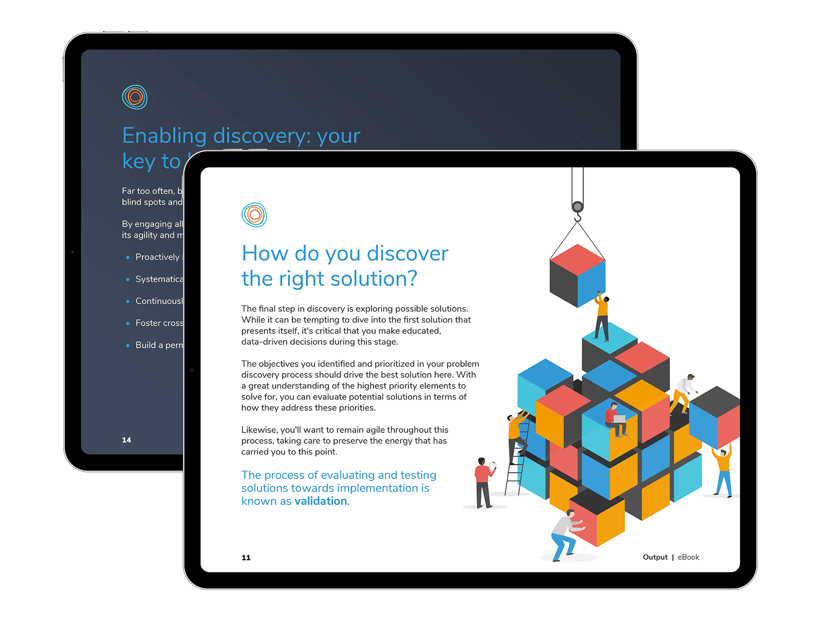Whether you're resolving a customer complaint, performing a quality assurance check or submitting an expense report, the business processes you employ every day can either be assets or obstacles in helping you complete the task at hand.
The consequences of poor business processes include unhappy customers, increased costs, missed deadlines, frustrated employees and more — making it crucial for businesses to continually seek new ways to identify and improve their business processes. Here are three tips to help you get started.
To improve a business process, you must first fully understand it end-to-end. Not what you think is happening, but what is actually happening on the ground with the stakeholders involved. Especially the elements of the process that live in people's heads. You are seeking to gain a clear understanding of everyone involved along the way and what each person does in the process. There is almost always a disconnect between the ideal state of a process and what is actually happening in practice.
As you engage the stakeholders in a business process, be sure to consider:
As you go through this process of discovery, visualize the information. We often use flow charts and swim lanes for this purpose. As the stakeholders see the visual representation of the business process it's easier to identify what's missing and to get a complete picture.
Now that you've done a great job documenting and visualizing the business process with your stakeholders, you can collectively analyze and work to improve it. As an aside, engaging your stakeholders in the process documentation and visualization arms them with a better end-to-end understanding of the process they are involved with so they can meaningfully collaborate to make improvements thereto and add value.
To effectively analyze the business process, identify and prioritize areas of improvement, ensure you have a clear understanding of the business objective(s) and communicate those objectives to your stakeholders. For example, is your objective to:
Depending on your objectives, you will need to look for different opportunities during your analysis. For example, if your goal is to increase speed, then you may look for redundancies or bottlenecks you can remove. If your goal is to improve process quality, then you may seek to add checkpoints or redundancies for quality assurance. If your goal is to reduce waste, you might identify steps that can be automated.
To effectively improve a business process, you first need to understand what's causing the current inefficiencies. Start by identifying your problem, which is simply the inverse of your opportunity for improvement. For example, if your opportunity is to "improve communication between web designers and developers," your problem is something like "there's a lack of alignment between design and development teams". State the problem and dive into the "why?" five times, digging deeper each time. Sakichi Toyoda's 5 Whys provide a simple framework for this process. For the team alignment example, your answers might be:
Your findings from the 'why' exercise will help you pinpoint which part(s) of your process should change to produce results and promote business growth.
During this analysis, you can also define reasonable goals for your process improvement efforts. For example, you likely can't overhaul your entire web department overnight. However, you can make incremental changes to improve communications and align internal teams by introducing new tools and scheduling recurring syncs or check-ins then measure the results.
After you've pinpointed areas for improvement, it's time to redesign and implement your new process! Although it may be tempting, you won't want to change too many variables at once; instead, be empirically disciplined and focused so that you can measure and attribute the results.
Test and monitor your results to see whether you've moved the needle vis a vis your objectives. Did the quality of the output improve? Did you meaningfully expedite the process? Did you meet the goals you established during your analysis? Have you introduced new issues?
Remember, there's no such thing as a perfect process. Technology, tools and people are constantly transforming providing endless opportunities for engagement and improvement. Promote a culture of continuous improvement by regularly and transparently discovering, prioritizing and actioning improvement opportunities with your employees. Empower your employees to add value.
With dozens, hundreds or even thousands of business processes taking place every day, it's impossible for managers and executives to identify every opportunity for business process improvement on their own. Employees involved in these processes have invaluable first-hand experience and insight into how well (or not) these processes work.
Organizations can leverage this experience and collective knowledge to solve problems and improve processes through discovery. Discovery is a process in which everyone at an organization has an opportunity to find, investigate and solve high-value business problems using a scalable set of processes and tools. If you'd like to learn more about the power of discovery, check out our guide Enabling Discovery: How to Find Business Problems Worth Solving.

170 - 422 Richards Street
Vancouver BC V6B2Z4